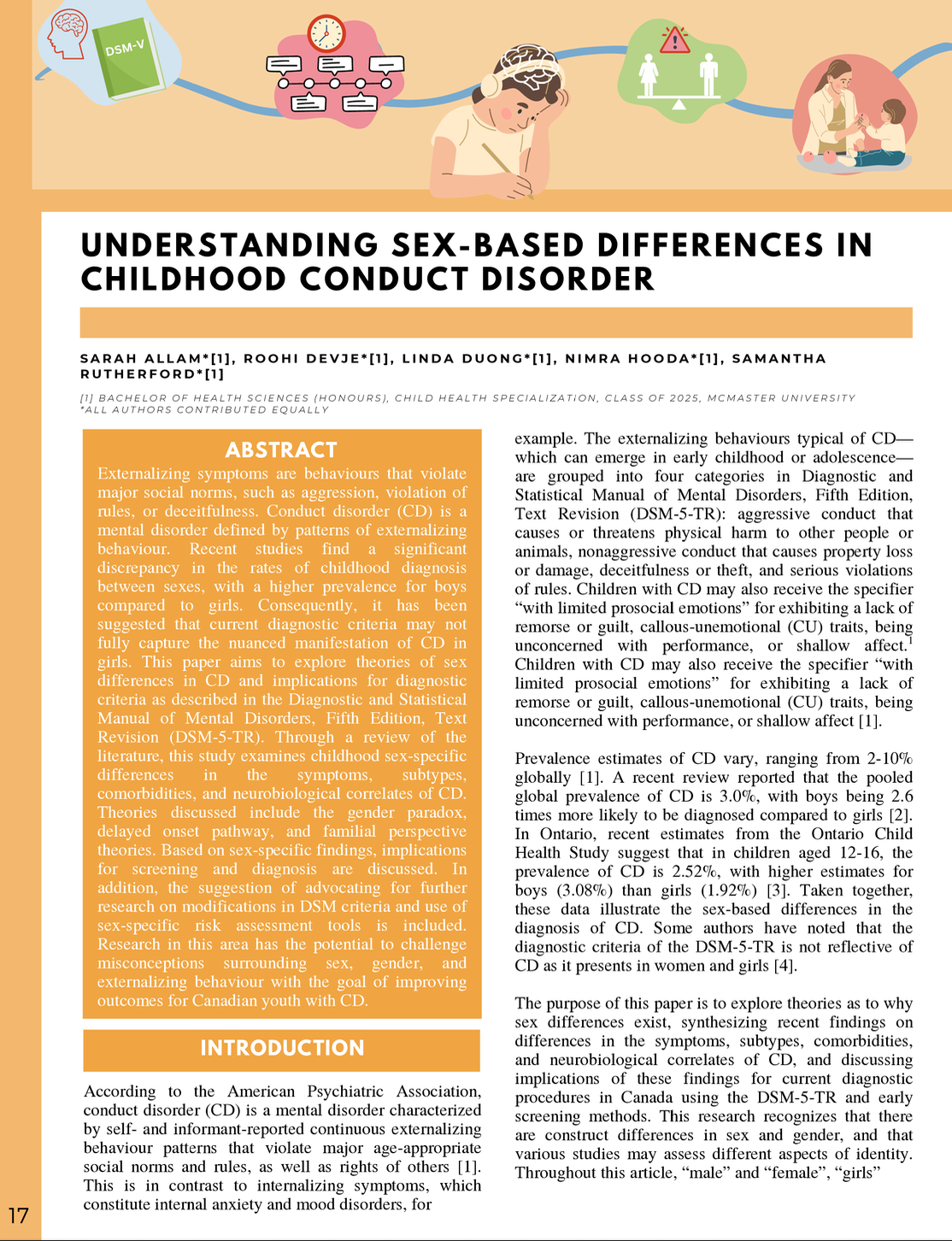Understanding Sex-Based Differences in Childhood Conduct Disorder
DOI:
https://doi.org/10.15173/child.v3i1.3900Abstract
Externalizing symptoms are behaviours that violate major social norms, such as aggression, violation of rules, or deceitfulness. Conduct disorder (CD) is a mental disorder defined by patterns of externalizing behaviour. Recent studies find a significant discrepancy in the rates of childhood diagnosis between sexes, with a higher prevalence for boys compared to girls. Consequently, it has been suggested that current diagnostic criteria may not fully capture the nuanced manifestation of CD in girls. This paper aims to explore theories of sex differences in CD and implications for diagnostic criteria as described in the Diagnostic and Statistical Manual of Mental Disorders, Fifth Edition, Text Revision (DSM-5-TR). Through a review of the literature, this study examines childhood sex-specific differences in the symptoms, subtypes, comorbidities, and neurobiological correlates of CD. Theories discussed include the gender paradox, delayed onset pathway, and familial perspective theories. Based on sex-specific findings, implications for screening and diagnosis are discussed. In addition, the suggestion of advocating for further research on modifications in DSM criteria and use of sex-specific risk assessment tools is included. Research in this area has the potential to challenge misconceptions surrounding sex, gender, and externalizing behaviour with the goal of improving outcomes for Canadian youth with CD.

